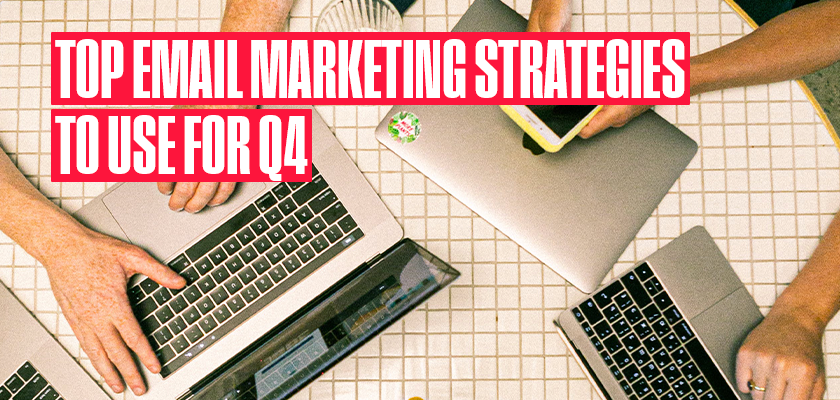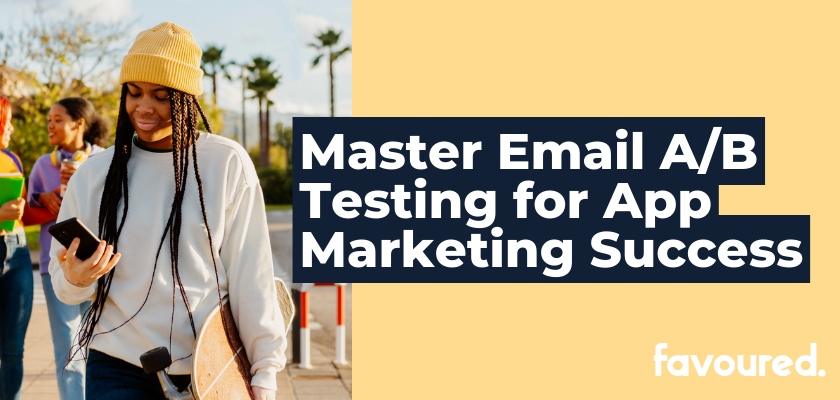EMAIL MARKETING
10 Brilliant Email Subject Lines to Boost Your Open Rates

Most people involved in email marketing know the importance of a brilliant email subject line. Seeing that you only get a few seconds to nail your email’s first impression, the subject line obsession is more than justified.
That is why crafting poor email subject lines is one of the biggest email marketing mistakes, regardless of how established your brand might already be.
Apart from nailing that first impression, your email subject line is the most decisive factor for recipients to open your email and engage with its content. Even worse, it’s what could get your email marked as spam and harm your sender’s reputation.
The numbers seem ruthless, but we reassure you there is a way out. All you need is a talented marketing team and a bit of creativity. We know you already have the first part, so all we need to do is help you with the second part. Continue reading to discover how to create clever email subject lines that get noticed – and, most importantly, opened.
What Makes a Great Email Subject Line
Creating email subject lines that grab readers’ attention and serve your marketing objectives should be your top priority. To achieve that, there are certain elements that subject lines should have, no matter what. Let’s check them out:
- Make it brief. Email subject lines are meant to be short and show the email’s value beforehand. That is even more important, seeing that many recipients will open your emails on mobile devices. Fortunately, most ESPs like AWeber and the most reliable AWeber alternatives allow you to preview how your emails look on different device types and check the components you must improve.
- Get to the point. Email recipients are busy people looking for the benefits that come with the emails delivered to their inboxes. To stand out in such a crowded space, you need to share what valuable insights your emails have in store for them. So, if you can help your audience see outstanding results and want to spread the news, your email subject line is the appropriate place.
- Keep it relevant. Your email subject line could be clever, unique, and precise. But if it doesn’t match the email content, it will do more harm than good. Your subject lines should be aligned with your email objective so that readers know what to expect and if they are interested in reading more. The last thing you want is to make a promise you won’t keep and make them feel misled.
- Personalize and conquer. Most subscribers have received tons of emails and have grown weary of emails without personalization elements. They need to feel special and that your brand has done its homework about who they are and what they want. Use the recipient data you have at your disposal to show them you care and give a human touch to your email promotions.
- Avoid spammy tactics. Would you open an email with a subject line that is fully capitalized and includes spam-triggering words? Probably not, and neither will your subscribers. To stay away from spam, avoid too many special characters, excessive capitalization, and spammy words like “buy,”, “money,”, or “click”.
Brilliant Email Subject Line Types That Get Opened
There are several approaches to catching your email recipients’ attention, from employing humor to piquing their curiosity. But putting in that creative spirit is a whole different matter, right? That’s why we compiled a list of the most brilliant email subject line examples to spark your inspiration and help you increase your open rates.
Generate urgency
When you include an element of urgency in your email subject lines, your recipients will open your emails in no time. Consumers tend to prioritize their purchase decisions based on the time sensitivity of the offer, and recipients are no different. Words like “now” or “limited time” can work wonders for your open rates, triggering subscribers to open and click through your email. So, if you have a time-sensitive offer, choose your marketing messaging wisely to highlight it in your email subject line. However, don’t overdo this type of promotion since receiving too many limited-time-only deals could get the opposite results and annoy your subscribers.
Subject line: Limited-time offer: free premium wristband with any Steel HR purchase.

Nokia is a brand that knows how to influence its subscribers to take the desired action and move down the sales funnel. This Valentine’s email promotion leverages time-sensitive language to create urgency. Not only that, but they made sure to include all the necessary information for readers to know what the deal is about. Recipients appreciate it when you save them time, and they can tell if they are interested in your promotion beforehand.
Highlight your personality
Most experienced marketing professionals are aware of the benefits personalization brings to the table. But while tweaking email elements to the recipient’s preferences is of utmost importance, getting personal isn’t just about that. Subscribers love authenticity and unique marketing messages that stand out from the crowd. Your email subject lines must reflect your brand personality, no matter the email objective. But for this tip to work, you must establish your brand’s tone of voice. You can play it funny, witty, professional, or whatever characteristic fits your business objectives. So, get your creative juices flowing as long as you keep it relevant and consistent with your overall branding.
Subject line: Your cart is sobering up

Abandoned carts are an integral part of a successful e-commerce email marketing strategy, and it’s an excellent field to showcase your brand personality. From start to finish, the email copy is brilliant and reveals the personality behind the brand. Liquor Loot uses a clever pun in the subject line related to the product left behind. The email content is aligned with the subject line and the overall brand tone. Even if recipients don’t click on that “Treat yourself” CTA, they will open the email and relate the tone to the brand the next time they get an email from them.
Show value
Email subject lines that announce exclusive deals, one-time offers, or special discounts are usually the ones with the highest open rates. That’s because they lead with the benefits, letting readers know what they can gain from opening and reading the email content. By being clear with your recipients from the start, you build a trusting relationship with them. When your email delivers on the promise in the subject line, you are one step closer to building customer loyalty. So, if your product or service solves an everyday challenge and helps them meet their goals, your email subject line should give readers a hint. To successfully follow this tip, make sure the language you use is actionable and precise, urging them to take action.
Subject line: Get a free handcrafted gift when you

This email subject line from Starbucks does much more than just mention a specific offer. They keep the recipient hanging on by stopping mid-sentence, almost forcing them to open the email and learn on what occasion they get the free drink. It’s straightforward, precise, and worth their while. From the benefits-oriented verb to the actionable email CTA, this email is about the reader taking the desired action within the specified time limit.
Ask a question
Posing questions is a popular content optimization strategy. Questions come with a double benefit: they increase recipients’ engagement and pique their curiosity. When subscribers come across a question in your subject line, it forces them to stop and think about the answer. To draw recipients into your email content, opt for intriguing questions that could open up a conversation rather than one with a simple yes or no answer. The sky is the limit here, but try to keep up with rising audience trends while staying on-brand. Their natural curiosity will be more than enough for them to want to learn more about it.
Subject line: How much do you know about sleep?

Casper’s subject line isn’t just posing a question. The email subject line takes it one step further by giving them an idea of what the email is about. That way, recipients know exactly what’s in it for them and expect to find helpful information regarding their sleeping habits once they open the email. This email subject line example ticks all the boxes by combining an intriguing question that picks recipients’ interest and valuable content that addresses their pain points.
Catchy Email Subject Line Examples
When it comes to email subject lines and the elements you could include to grab your readers’ attention, the sky is the limit. To stir your creative juices, we will present some of the most catchy email subject line examples that left us no choice but to open the emails.
- Subject line: Forget FOMO—see what’s waiting for you (Nike)
Looking for ways to leverage FOMO (Fear Of Missing Out) in a subject line to catch your recipient’s eye? FOMO is a psychological factor that many marketers rely on to motivate their target audience. Nike is our winner here. Readers know the email content addresses their needs just by reading the subject line. By asking recipients to forget about FOMO, Nike makes them feel included and that they are about to enter a world of exclusive deals and compelling product recommendations.
- Subject line: Get the story behind the brand (Drizly)
You can take one thing for granted: people love stories. Recipients have grown weary of companies going and on about their selling proposition. Sharing the story behind your brand adds a human touch to your emails. Your subscribers are curious about how everything started. Drizly’s subject line is attention-grabbing and straightforward. Email recipients appreciate knowing what they will read beforehand – in this case, inside information that makes them feel part of Drizly’s exciting journey.
- Subject line: Quiz: Which shower scent fits you best? (Harry’s)
Quizzes are among the most effective elements marketers can use to increase engagement. Even if a recipient isn’t interested in buying, the word quiz in an email subject line will make your email stand out in a stuffed inbox. That’s why Harry’s subject line highlights the quiz included and what it’s about. The quiz is related to the brand’s products, so recipients will be prompted to take it and find which shower scent matches their personality. And why not buy it, may we add.
- Subject line: Your basket is having abandonment issues… 🙁 (Jack Wills)
Humor is, by definition, a crucial element to include in a catchy email subject line. Companies that employ it in their subject lines watch their open rates and recipient engagement increase. This email subject line from Jack Wills is clever and to the point. It puts a smile on the reader’s face and motivates them to open the email, go back to their abandoned items, and proceed with the purchase.
- Subject line: You asked, we answered: What do I get as a member? (Thrive)
We can’t stress this enough; your audience loves knowing you care for them instead of just selling. Even more so when you hear them and are willing to address their concerns. This is precisely why this subject line from Thrive is so successful. It gives precise information on what readers will read in the email, meaning the benefits they gain as members. Subscribers always appreciate getting the answers they asked for, and “You asked, we answered” is as customer-centric as it gets.
- Subject line: Share your thoughts and get a chance at a $200 gift card! (Everlane)
Including surveys in your emails is highly recommended to increase recipients’ engagement. Surveys make customers feel their opinion matters and could shape your marketing strategy. In this email, Everlane isn’t limited to asking subscribers to answer the survey. The brand takes it one step further by adding a compelling incentive and highlighting it in the email subject line. Recipients are eager to offer feedback to a brand they have already interacted with. Even more so when it comes with a chance to win a $200 gift card.
Final Words
An email subject line is a critical component of every email promotion, giving marketers’ a headache each time they start crafting an email campaign. That’s because this tiny piece of content urges or discourages email recipients from opening an email. And seeing that they get tons of emails every day, you need to make that limited-character text count.
To do that, make sure to study your target audience and employ a brand tone that hits their soft spots. Create time-sensitive offers, ask questions they will be eager to answer, and always remember to show why your email marketing message is worth their while. Whatever you do, ensure you monitor how your email subject lines perform.
All you need is reliable email marketing software with A/B testing capabilities that allow you to check what works and what doesn’t. Even if you discover your subject lines hit the target, don’t rest on your laurels and use those insights to continue tweaking your subject lines to drive long-term success.
EMAIL MARKETING
Unveiling the Future of Email Marketing: 4 Trends to Revolutionize Engagement

In today’s fast-paced digital landscape, the efficacy of email marketing hinges not only on the delivery of messages but also on their ability to resonate with audiences and drive meaningful interactions. Gone are the days of generic blasts; instead, companies are increasingly turning to innovative strategies to captivate their subscribers. Here, we delve into four emerging trends poised to redefine the realm of email marketing, promising to elevate engagement and drive conversions.
1. User-Generated Content (UGC) Takes Center Stage
User-generated content (UGC) emerges as a potent tool in the arsenal of email marketers, facilitating authentic connections with audiences while amplifying brand visibility. From customer reviews to social media posts, UGC offers a dynamic and relatable portrayal of products and services, resonating with consumers in the era of “new sincerity.”
By harnessing UGC within newsletters, brands gain invaluable insights into consumer preferences and behaviors, fostering trust and credibility. Strategies such as incentivized contests or social media challenges empower users to contribute content willingly, fueling a steady stream of authentic engagement.
2. Augmented and Virtual Realities (AR/VR) Transform Experiences
Augmented reality (AR) and virtual reality (VR) technologies emerge as game-changers in the realm of email marketing, offering immersive experiences that captivate and compel audiences. While VR may require substantial investments and specialized equipment, AR presents a more accessible avenue for brands to showcase products and drive engagement.
From interactive product demonstrations to virtual try-on experiences, AR/VR initiatives promise to revolutionize email campaigns, offering users a glimpse into a digitally enhanced world. While technical constraints may limit current implementations, ongoing advancements herald a future where AR/VR seamlessly integrate into email communication, enriching brand experiences.
3. Omnichannel Integration Enhances Connectivity
The advent of omnichannel marketing heralds a new era of seamless connectivity, enabling brands to orchestrate cohesive experiences across diverse touchpoints. By unifying customer interactions across websites, offline stores, and email communications, businesses cultivate deeper insights and deliver personalized content tailored to individual preferences.
Omnichannel integration not only streamlines the customer journey but also fosters brand loyalty by offering consistent and personalized experiences. Whether browsing online, engaging in-store, or interacting via email, customers encounter a unified brand identity, enhancing engagement and driving conversions.
4. Hyper-Segmentation and Personalization Drive Relevance
In an age defined by personalized experiences, hyper-segmentation emerges as a cornerstone of effective email marketing strategies. By dissecting audiences into granular segments based on demographics, behaviors, and preferences, brands can deliver tailored content that resonates on a profound level.
Utilizing advanced email marketing platforms, businesses can leverage hyper-segmentation to craft personalized campaigns that speak directly to individual interests and needs. From dynamic product recommendations to targeted promotions, personalized emails foster a sense of relevance and exclusivity, driving engagement and fostering long-term customer relationships.
In conclusion, the future of email marketing lies in innovation and adaptation, with brands leveraging cutting-edge technologies and strategic approaches to engage audiences effectively. By embracing trends such as user-generated content, augmented reality, omnichannel integration, and hyper-segmentation, businesses can unlock new realms of engagement, driving meaningful interactions and fostering brand loyalty in an ever-evolving digital landscape.
EMAIL MARKETING
Top Email Marketing Strategies To Use For Q4

As we approach the Q4 period, it’s never too early to start preparing for your Black Friday and Cyber Monday email marketing strategy. Once Black Friday week hits, our inboxes are filled with a hurricane of brands fighting for attention, each with the ‘biggest’ and the ‘best’ offers you won’t get anywhere else.
To set your brand apart from the competition, it’s crucial to plan ahead. Over 60% of brands send out multiple emails over the course of the Black Friday/ Cyber Monday weekend, and it’s a perfect time to up your brand awareness ahead of the Christmas shopping season.
If you’re not sure where to start with Q4 planning or need some last-minute tips to enhance your strategy, we’ve outlined some top email marketing strategies to incorporate into your plans!
1. Send Pre-Black Friday Emails
Sending pre-Black Friday emails is great for keeping your brand at the forefront of people’s minds ahead of the big day. Not only will a pre-Black Friday email let your audience know about your upcoming event, but it will also ensure that your audience is regularly checking in on your brand throughout the Q4 period.
Additionally, sending pre-Black Friday emails is beneficial for A/B testing. Sending out different formats of emails with minor tweaks, such as the CTAs or subject lines, can help you determine what your audience is more likely to engage with so you can then tailor your Black Friday strategy accordingly.
2. Run a Lead Gen
It might seem like a given, but ahead of Black Friday, it’s beneficial to give your email list a much-needed boost. A simple but effective way to do this is to run a lead-generation advertising campaign. For example, offering your audience the chance to win a prize in return for submitting details, such as their email address, is a quick and easy way to increase your list size. Similarly, refreshing your pop-up on-site with an irresistible offer will also contribute to gaining new profiles.
3. Offer Something Unexpected
Email marketers only have 3 seconds to capture the attention of their readers, which isn’t surprising due to the amount of emails the average person will receive daily. If an email isn’t driving you to click on it, it swiftly gets forgotten about and lost within their inbox. Over Black Friday, to avoid this happening, make sure you’re offering something unexpected, whether that’s a mystery discount or a gift with each purchase!
One of the worst things you can do over Black Friday is to overcomplicate your promotions. If you’re offering multiple promotions and codes, things can get a bit too hectic. To make it as simple as possible, consider running a standard “up to” percentage amount. If you want to include a code, it helps to have this auto-applied at checkout to avoid customers dropping off if they input it incorrectly. In the design of your email, make sure the promotion is clearly highlighted within the design so it can’t be missed, and also referenced in the body copy and subject lines too!
5. Create An Effective Design
Creating an effective design is one thing, but how do you know what works? To improve your email campaigns, consider running an A/B test to pinpoint which elements of your design are improving the CTR and which are hindering it.
Highlighting metrics such as colour, font size, and CTAs can instantly impact whether people will click through or discard! If a consumer clicks on your email, you’ll have, on average, 11 seconds to keep their attention, so making sure your design stands out for the wave of other Black Friday content is key! Keep the design of your email reflective of your branding but with stand-out elements specifically for the shopping season.
6. Make Use Of CTAs
CTAs (call-to-action) are one of the most underrated parts of any email campaign, especially over the Black Friday period. They’re one of the driving forces behind making your email recipients turn into passive readers to customers. One key way to make your CTAs stand out is to make use of bright and bold colours that will attract and hold attention. Additionally, it’s important to think about the placement of your CTAs to increase your click-through rate, make sure the copy used is clear and concise (between two and five words) and use actionable language.
7. Focus On Subject Lines
Subject lines are make or break for every email campaign. Over Black Friday, consumers’ inboxes are cluttered with emails, so it’s important to stand out. It’s estimated that on Black Friday, 116.5 million emails from brands were sent out (more than any other day), and Black Friday sees the highest number of emails opened and clicked. To prevent your emails from being lost in the void, having a cracking subject line to stand out from competitors is everything.
The secret to a great subject line is to keep it short and snappy. On average, subject lines with 50 characters or less tend to get an average of 12% higher open rates and 75% higher click-through rates. Including emojis within subject lines has been seen to increase click-through-rates by as much as 28%!
Additionally, it helps to use language that will really pique your audience’s interest, stay away from any overused cliches and keep them as attention-grabbing as possible.
8. Prep for Cyber Monday
To plan an effective Black Friday, it’s crucial to prepare for Cyber events too. With Cyber following straight after, it’s easy to forget about it or not prioritise it as much as Black Friday, however, it’s still an extremely profitable day! To make the most of it, create dedicated campaigns and tailor your online sales messaging so that it focuses on driving urgency.
9. Incorporate SMS into Your Strategy
Sometimes the importance of SMS can be overlooked because a lot of brands assume that text messages won’t fit in with their brand. However, it’s a no-brainer for reaching even more customers. On average, 82% of people engage with marketing content on their smartphones, so it’s something to definitely explore, especially over the busy shopping period.
To gain SMS sign-ups, you can effectively tie your SMS campaign in with your lead generation and ask for customers to fill out their phone number as well as their email address. That way, they’ll be opted into your send list. It can also be used to send reminders when sales have launched or when offers are coming to a close.
Despite having only 160 characters to work with, SMS campaigns are longer than recommended email subject lines, so it can be just as, if not more effective than email marketing campaigns.
EMAIL MARKETING
Mastering Email A/B Testing for Mobile Apps: The Ultimate Guide

Welcome to the world of email A/B testing for mobile apps!
Here at Favoured, we’re all about delivering the best results for our clients, and that includes mastering the art of email marketing. In this guide, we’ll take you through the essentials of A/B testing your email campaigns to achieve maximum success for your mobile app.
What Is Email A/B Testing?
Email A/B testing, also known as split testing, is a method used to compare two or more variations of an email campaign to determine which one performs better. The goal is to identify the version that resonates most with your target audience, ultimately leading to higher open rates, click-through rates, and overall engagement.
In the context of mobile apps, email A/B testing can be particularly valuable, as it helps you fine-tune your marketing messages to drive user acquisition, engagement, and retention.
Benefits Of Email A/B Testing
There are numerous advantages to incorporating A/B testing into your email marketing strategy for mobile apps. Some of the key benefits include:
- Improved open rates: By testing different subject lines, you can identify which ones capture your audience’s attention and entice them to open your emails.
- Increased click-through rates: Experimenting with various email elements, such as CTAs and layout, can help you determine the most effective ways to encourage recipients to take action.
- Enhanced engagement: A/B testing allows you to create more relevant and engaging content for your target audience, resulting in higher conversion rates and stronger user relationships.
- Data-driven decision making: With A/B testing, you can make informed decisions based on actual user behaviour, rather than relying on assumptions or gut feelings.
Key Metrics To Track
When conducting email A/B tests, it’s essential to track specific metrics to gauge the success of your campaigns. Some of the most critical metrics to monitor include:
- Open rate: The percentage of recipients who open your email. This metric can help you evaluate the effectiveness of your subject lines.
- Click-through rate (CTR): The percentage of recipients who click on a link within your email. A high CTR can indicate that your email content is engaging and relevant.
- Conversion rate: The percentage of recipients who take the desired action after clicking a link in your email, such as downloading your app, making a purchase, or signing up for a newsletter.
- Unsubscribe rate: The percentage of recipients who opt out of receiving future emails from you. A high unsubscribe rate may suggest that your email content is not resonating with your audience.
Understanding the basics of email A/B testing is the first step towards optimising your mobile app marketing campaigns. By grasping the concept, benefits, and key metrics of A/B testing, you’ll be well-equipped to make data-driven decisions that drive real results for your mobile app.
Setting Up Your Test
Defining Your Goal
Before you start setting up your A/B test, it’s crucial to determine the primary objective of your test. Having a clear goal will help you focus your efforts and make data-driven decisions based on the results. Your goal should align with your overall mobile app marketing strategy and be specific, measurable, attainable, relevant, and time-bound (SMART). Examples of goals for email A/B tests include:
- Increasing the open rate by 10% within 30 days
- Boosting the click-through rate by 15% within 60 days
- Reducing the unsubscribe rate by 5% within 45 days
Selecting Variables To Test
Once you’ve set your goal, it’s time to choose the variables to test in your email campaign. The variables you select should have a direct impact on your goal and be something you can measure. Here are some common email elements to consider testing:
- Subject lines: Test different wording, phrasing, or personalisation techniques to capture your audience’s attention.
- Email content: Experiment with different content styles, lengths, or structures to see what resonates with your recipients.
- Call-to-action (CTA): Try various CTA placements, wording, or button designs to encourage users to take the desired action.
- Images and visuals: Test different images, colours, or visual layouts to determine which one drives higher engagement.
- Personalisation: Compare personalised content, such as using the recipient’s name, to generic content to assess its impact on your metrics.
Creating Variations
Now that you’ve chosen your variables, it’s time to create the variations for your email campaigns. Keep the following tips in mind when crafting your variations:
- Limit the number of variations: While it may be tempting to test multiple variations, it’s best to limit yourself to two or three, so you don’t dilute your results or prolong the testing process.
- Make distinct changes: Ensure the variations are different enough to provide meaningful insights. For instance, if testing subject lines, one could be a question, while the other could be a statement.
- Keep other elements consistent: To ensure accurate results, only change the variable you’re testing and keep all other elements the same across variations.
- Consider your audience: When creating variations, take into account your target audience’s preferences and behaviours to craft relevant and engaging content.
Setting up an A/B test for your mobile app’s email campaigns is an essential step towards optimising your marketing efforts. By defining your goal, selecting the right variables to test, and creating effective variations, you’ll be well on your way to enhancing your app’s performance and building stronger relationships with your users.
Implementing & Analysing Your Test
Test Duration & Sample Size
Determining the optimal test duration and sample size is crucial for obtaining accurate and reliable results. Here are some factors to consider when deciding on these parameters:
- Test duration: The length of your test should be long enough to gather sufficient data, but not so long that it delays your marketing efforts. Generally, a test duration of 7 to 14 days is recommended for most email A/B tests.
- Sample size: Your sample size should be large enough to provide statistically significant results. Use an A/B test sample size calculator to determine the appropriate size based on your desired confidence level and the expected difference between variations.
Keep in mind that these recommendations may vary depending on your specific circumstances, such as the size of your email list or the frequency of your email campaigns.
Launching Your Test
Once you’ve determined the test duration and sample size, it’s time to launch your A/B test. Follow these steps to ensure a smooth test launch:
- Segment your email list: Divide your email list into random, equal-sized groups to ensure a fair comparison between variations.
- Send your variations: Schedule your email campaign to send the different variations to the corresponding segments of your email list.
- Monitor the progress: Keep an eye on the key metrics, such as open rates, click-through rates, and conversion rates, throughout the test duration to ensure everything is running smoothly.
Analysing Results & Drawing Conclusions
After your test has concluded, it’s essential to analyse the data, draw conclusions, and apply your findings to future email campaigns. Here’s how to go about it:
- Review the data: Examine the key metrics for each variation and compare them to determine which one performed better.
- Check for statistical significance: Use an A/B test calculator to ensure the differences between the variations are statistically significant, indicating that the results are not due to random chance.
- Draw conclusions: Based on the data, determine what you’ve learned from the test and how it can inform your future email marketing efforts. For instance, if a specific subject line format led to higher open rates, consider using a similar approach in future campaigns.
- Apply your findings: Incorporate your learnings into your email marketing strategy to continually optimise your campaigns and drive better results for your mobile app.
Implementing and analysing your email A/B tests is a critical step towards optimising your mobile app marketing campaigns. By determining the appropriate test duration and sample size, launching your test, and analysing the results, you’ll be able to make data-driven decisions that enhance your app’s performance and foster stronger relationships with your users.
Best Practices
Consistent Testing
To achieve long-term success in email marketing for mobile apps, it’s crucial to make A/B testing a consistent part of your strategy. Regular testing allows you to:
- Continuously optimise your campaigns: Stay ahead of the curve by continually refining your email campaigns based on data-driven insights.
- Adapt to changing trends: Keep your email marketing efforts relevant and up-to-date by adapting to evolving user preferences, industry trends, and market dynamics.
- Validate new ideas: Use A/B testing to validate new marketing concepts or tactics before fully implementing them in your campaigns.
Avoiding Common Pitfalls
As with any marketing endeavour, there are potential pitfalls to watch out for when conducting email A/B tests. Here are some common mistakes and how to avoid them:
- Testing too many variables at once: Focus on testing one variable at a time to ensure accurate results and avoid confusion when analysing the data.
- Ignoring statistical significance: Make sure your test results are statistically significant to avoid drawing conclusions based on random chance or insufficient data.
- Focusing solely on short-term gains: While it’s essential to optimise for immediate results, also consider the long-term impact of your email marketing strategy on user retention and lifetime value.
Utilising Automation & Growth Hacking Strategies
Leveraging automation and growth hacking techniques can help streamline your email A/B testing efforts and drive even better results for your mobile app. Consider the following strategies:
- Email automation: Use email marketing automation tools to schedule and send your A/B tests, track key metrics, and segment your email list efficiently.
- Dynamic content: Implement dynamic content in your email campaigns to personalise messages based on user behaviour, preferences, or demographics, and A/B test the effectiveness of various personalisation techniques.
- Multivariate testing: Once you’re comfortable with A/B testing, consider using multivariate testing to assess the impact of multiple variables simultaneously and identify the best combination of elements for your campaigns.
Mastering email A/B testing for your mobile app is an ongoing process that requires consistent effort, learning, and adaptation. By following best practices, avoiding common pitfalls, and utilising automation and growth hacking strategies, you’ll be well on your way to achieving long-term success in your email marketing campaigns.
As a data-driven full-funnel marketing agency, Favoured believes in the power of optimising every aspect of the customer journey, and that includes email marketing.
We’re dedicated to helping businesses drive real results, and A/B testing plays a crucial role in this process. Reach out if you want to supercharge your email campaigns with us. Happy testing!
-

 PPC5 days ago
PPC5 days ago19 Best SEO Tools in 2024 (For Every Use Case)
-

 MARKETING7 days ago
MARKETING7 days agoStreamlining Processes for Increased Efficiency and Results
-
SEARCHENGINES6 days ago
Daily Search Forum Recap: April 17, 2024
-

 PPC7 days ago
PPC7 days ago97 Marvelous May Content Ideas for Blog Posts, Videos, & More
-

 SEO7 days ago
SEO7 days agoAn In-Depth Guide And Best Practices For Mobile SEO
-
SEARCHENGINES5 days ago
Daily Search Forum Recap: April 18, 2024
-

 MARKETING6 days ago
MARKETING6 days agoEcommerce evolution: Blurring the lines between B2B and B2C
-
SEARCHENGINES4 days ago
Daily Search Forum Recap: April 19, 2024














You must be logged in to post a comment Login